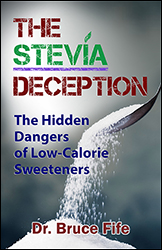E-Mail Edition Volume 14 Number 1
Published Winter, 2017
Published by Piccadilly Books, Ltd., www.piccadillybooks.com.
Bruce Fife, N.D., Publisher, www.coconutresearchcenter.org
If you would like
to subscribe to
the Healthy Ways Newsletter
Contents
-
The Stevia Myth
-
Ketogenic Recipes: Real or Fake?
-
Coconut Sugar and the Ketogenic Diet
-
Eggs, Cholesterol and Cardiovascular Disease: The Real Science
by Dr. Bruce Fife
The Stevia Myth
Stevia May
Not Be So Good After All
Warning: the information in this article may be objectionable to some readers blinded by marketing propaganda and misconceptions. Only those sincerely seeking the truth should consider reading further.
When I first
learned about stevia years ago, I was excited. Finally, here was a
sweetener derived from an herb rather than from some chemist’s
laboratory. It was a product of nature and not of man, so it had to be
good. Since it contained no sugar, it was believed to have no effect on
blood sugar levels and could be safely used by diabetics. It was many
times sweeter than sugar so you only needed a tiny amount to give foods
the same sweetness as sugar but without all the calories. It seemed like
a dieter’s dream.
Marketers
promoted stevia as a natural, herbal sweetener that could help control
blood sugar, ease sugar cravings, aid in weight loss, and improve
digestive health. It had an exotic appeal because it was derived from a
rare herb found only in the wilds of South America. Stevia took on the
persona of a natural, wholesome sweetener that was a far healthier
choice than sugar or artificial sweeteners.
I was whisked
away by all the hype and believed, like many others, that stevia was a
wholesome natural sweetener that promoted good health. Stevia was added
to my diet at home and I encouraged others to use it in place of sugar
or artificial sweeteners. I developed many recipes using it. However, I
began to notice side effects with stevia that concerned me. I began to
wonder if stevia was really as wholesome and healthy as promoters claim.
This prompted me to look beyond the hype and delve into the science to
uncover the facts. What I found shocked me! Much of the information we
are told about stevia is more marketing hype than truth. The more I
researched, the more I discovered that most of what we believe about
stevia is simply not true—they’re myths and misconceptions created by
promoters trying to sell a product.
Through my
research, I have found many problems with stevia, more than I can
include in this article, but I would like to highlight six major myths
and give you the facts, all of which are verified by published medical
studies and plain old common sense.
Myth 1: Stevia
is Harmless Because it Comes from a Plant
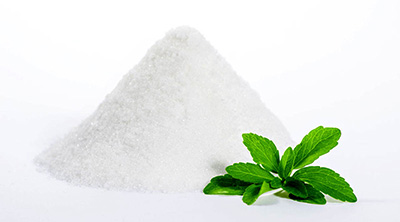
Herbs are
natural, harmless, and often beneficial right? That’s the image
marketers give us and we have fallen for that lie hook, line, and
sinker. Just because something comes from a plant does not make it
wholesome or harmless. There are many natural substances that are
poisonous or otherwise harmful. Have you ever experienced the
consequences of touching the leaf of a poison ivy plant or felt the pain
of stinging nettle? Many poisons, such as cyanide and ricin, are derived
from plants. Many dangerous drugs also come from plants. Simply because
stevia is derived from a plant does not make it harmless, let alone
healthful.
Myth 2: Stevia
is an Herbal Sweetener
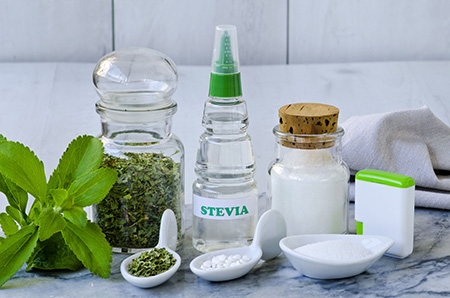
We’ve all been
told that stevia is an “herbal” sweetener. Nothing can be further from
the truth. The sweetener that is sold in
stores shares no resemblance to the stevia plant. In fact, these
sweeteners should not even be called stevia, but by their chemical names
rebaudioside A and stevioside. It’s all a part of the misconception that
stevia marketers use to deceive the public.
The stevia
sweetener you buy in the store cannot be
called an herb or even a natural product; it is a highly
processed, refined, purified chemical. The sweetness of stevia comes
from chemicals called steviol glycosides. In the refining process, all
of the vitamins, minerals, antioxidants, essential oils, and other plant
components are stripped away leaving purified steviol glycosides. Some
manufactures purify their products into individual steviol glycosides,
primarily rebaudioside A and stevioside.
Stevia is no
more natural than is sugar or cocaine.
Sugar is extracted and refined from sugar beets. Cocaine is extracted
and refined from cocoa leaves. Likewise, stevia sweetener is extracted
and refined from stevia leaves. To call stevia an “herbal” sweetener is
like calling sugar a “vegetable” sweetener because it comes from beets.
Like sugar and cocaine, purified stevia extract
forms a white crystalline powder. It has no resemblance to the original
herb in any way, shape, or form. It is more like a drug than it is an
herb. It’s most potent drug-like effect is its sweetness, which is 200
to 300 times sweeter than sugar.
Myth 3: Stevia
is Not Addictive
One of the
major problems with sugar is that it is addicting. In fact, studies have
shown that it is just as, and even more addicting than cocaine. For
example, when lab rats are given free access to both cocaine and sugar,
they prefer sugar over cocaine. Even rats who are already addicted to
cocaine quickly switch their addiction to sugar as soon as they are
offered a choice.1
People, too, become addicted to
sugar. That is one of the reasons why we have an obesity epidemic. Like
cocaine, sugar triggers pleasure centers in the brain that drive us to
eat sweets and encourage us to overindulge. Haven’t you ever eaten a
piece of chocolate and then just had to have another and another? You
just had to eat more even though you knew you had eaten enough. When you
ignore sound judgment and make decisions based on cravings, you are
addicted.
The addiction
to sugar is not isolated to just sugar, but extends to all non-caloric
sweeteners as well. It is not as much a “sugar” addiction as it is a
“sweet” addiction. We become addicted to the sweetness rather than to
sugar itself. Non-caloric sweeteners trigger the same pleasure centers
in the brain that sugar does and causes the same cravings and
addictions.
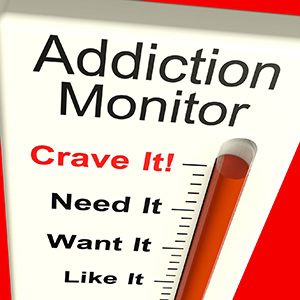
Researchers
tested rats using saccharine, which is completely different chemically
from sugar. The results were the same. The type of sweetener didn’t
matter, it was the sweet taste that triggers the powerful effect, not
the type of sweetener or the specific chemical makeup of the sweetener.
Stevia has the same effect. When rats are given the choice between
saccharine or stevia, their preference for stevia is just as strong as
it is for saccharin.2
Addiction to
stevia was one of the characteristics I first noticed. People would
switch their addiction from sugar or aspartame to stevia once they began
using it. Instead of eating desserts and junk foods sweetened with
sugar, they were eating the same types of foods sweetened with stevia.
And they had the same cravings for sweets. Stevia does not curb your
sweet tooth at all, it feeds it, keeping sugar cravings and addictions
alive and active.
Myth 4: Stevia
Aids in Weight Loss
Most people
use stevia to eliminate the calories from sugar and reduce their total
calorie consumption as a means to lose or maintain their weight. Yet,
those people who use it are not very successful with weight loss, and
those who do manage to lose weight, work very hard at it and must reduce
their total calorie intake drastically, making their weight loss journey
a constant, unpleasant struggle. The simple truth of the matter is that
stevia and other non-caloric sweeteners do not aid in weight loss, but
promote weight gain!
Studies show
that when people add non-caloric sweeteners into their diets, they tend
to gain weight, not lose it. This is clearly demonstrated with those
people who drink diet sodas. This effect isn’t because people with
weight problems tend to drink diet soda and so are more susceptible to
weight gain. Even normal weight people who drink diet sodas gain weight
more rapidly than those who drink the same amount of regular soda.3
Animal studies
have proven that non-caloric sweeteners, in comparison to sugar, lead to
greater total calorie intake, greater weight gain, and increased body
fat deposition. Several large scale human studies have found the same
thing.4 The type of non-caloric sweeter makes no difference;
they all have the same weight promoting effect, including stevia.5
The reason for
this is that sugar activates taste receptors on the tongue that relay
messages to the brain and gastrointestinal tract to release hormones and
prepare for the incoming sugar calories. When non-caloric sweeteners are
consumed, they activate the same sweet taste receptors on the tongue and
set into motion this same process. However, when the anticipated sugar
calories don’t come, hunger is intensified, which encourages overeating
and weight gain. There is also a metabolic effect. Sugar stimulates
metabolism immediately after eating, non-caloric sweeteners do not. So
after eating a meal containing non-caloric sweeteners, more of the
calories are converted into fat and packed away in storage.6
Although
non-caloric sweeteners all have different chemical properties, their
effect on weight gain is the same. The reason has nothing to do with
their chemical makeup, or whether they come from an herb or a
laboratory, but has everything to do with their intense sweetness and
their lack of calories.
If weight loss is your goal, you would be better
off consuming real sugar than you would stevia.
Myth
5: Stevia is Good for Digestive Health
The
gastrointestinal (GI) tract is the home for trillions of microorganisms
collectively called the gut microbiota. Some of these bacteria and
yeasts are important to our health because they help digest food,
produce vitamins, and support immune function, among other things. Some,
however, are not so useful and if present in too large a number can
disrupt the intestinal environment and wreak havoc on digestive function
and overall health.
The
overconsumption of sugar and sweets is believed to feed these
potentially harmful microorganisms causing them to proliferate and
disrupt the balance between the good and bad microbes. The theory is
that replacing sugar with stevia will limit the amount of nourishment
going to the bad bacteria, thus limiting their ability to grow and
multiply, resulting in a healthier digestive tract. The major problem
with this concept is the fact that both the so-called good and the bad
microbes feed on the sugar and carbohydrates in the diet. So eliminating
sugar “starves” the good bacteria just as much as the bad.
When you eat
sugar, taste receptors trigger the release of hormones that prepare the
GI tract for the incoming sugar calories. Non-caloric sweeteners produce
the same response. After eating food containing non-caloric sweeteners,
the GI tract is primed to receive an incoming load of sugar. When the
anticipated sugar calories do not arrive, changes occur that cause a
shift in the bacterial population in an unhealthy direction.
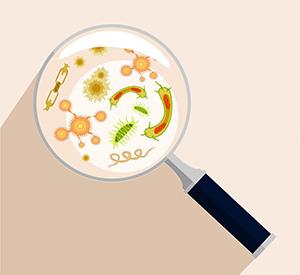
More than 90 percent of the bacterial species in the gut comes from just two major subgroups—Firmicutes and Bacteroidetes. The percentage of these two types of bacteria greatly influences a person’s weight. Obese people have 50 percent more Firmicutes and 50 percent fewer Bacteroidetes than normal weight people. Firmicutes are better adapted to breaking down foods and extracting nutrients, which causes a higher percentage of calories to be removed from digesting food. They also influence genes causing a higher rate of these calories to be converted into fat and stored in the body.7 For this reason, some people refer to Firmicutes as the obesity bacteria. The more Firmicutes you have living in your gut, the more likely you are to be overweight or obese.
Studies have
clearly demonstrated that consuming non-caloric sweeteners increases
Firmicutes and decreases Bacteroidetes populations in the gut, thus
promoting obesity.8 Researchers can take fecal samples from
obese mice and transplant them into normal weight mice and cause them to
become obese as well. They can also cause normal weight mice to become
obese by feeding them food containing non-caloric sweeteners in place of
sugar. The same thing occurs in humans. All non-caloric sweeteners,
including stevia, have this effect.
Stevia
disrupts the normal gut environment leading to metabolic changes that
promote weight gain and alters normal digestive function.
Myth 6: Stevia
is Good for Diabetics because it Does Not Affect Blood Sugar
You would
think that replacing sugar, that strongly affects blood glucose levels,
with a non-caloric sweetener, which has little effect, would be of
benefit to diabetics. For this reason, stevia has been promoted as a
better choice than sugar for diabetics. While stevia has little effect
on blood sugar levels directly, its long-term effects greatly increases
the risk of insulin resistance and diabetes.
Most non-caloric sweeteners, including stevia, are not easily broken down or digested. This is the reason why they do not provide any calories. This may sound good to people who want to reduce their calorie intake, but it causes a serious problem. When glucose enters the digestive tract it triggers the release of hormones that aids in its digestion and assimilation, as a consequence, glucose is quickly absorbed and removed from the intestines. This is why it has such a dramatic effect on raising blood sugar levels.
Stevia, and
other non-caloric sweeteners, also trigger the release of these same
hormones. However, since non-caloric sweeteners do not break down, they
are not readily absorbed. They remain in the digestive tract for
extended periods of time and continually trigger the release of hormones
needed to process glucose.9 While eating stevia does not have
much of an effect on blood sugar levels, it does exert an enormous
effect within the GI tract. As stevia travels down the GI tract it
continues to activate glucose receptors. Consequently, it has the same
effect in the GI tract as that of downing massive quantities of glucose.
This huge hormonal influx and corresponding lack of sugar calories
causes changes in microbiota colonies, alters pH, disrupts insulin
regulation, causes metabolic dysfunction, and promotes weight gain,
leading to insulin resistance and an increased risk of developing
diabetes. If someone is not diabetic, stevia use can make them more
susceptible to developing it, if a person is prediabetic it can push
them into full-blown diabetes, if they are already diabetic, it can make
their condition even worse.
Stevia should
never be used by anyone who is diabetic or who is concerned about
becoming diabetic.
Now that you
have the facts about stevia, you can make an informed choice whether to
use it or not. This article only touches on some of the major problems
with stevia and other non-caloric sweeteners. When you look at all of
the evidence, it is revealed that stevia promotes weight gain, GI
disorders, and diabetes to a greater extent than sugar does. If you
would like a more detailed report with accompanying references to
studies, I highly recommend you read my book
The Stevia Deception: The Hidden Dangers of Low-Calorie Sweeteners.
References
-
Magalle, L., et al. Intense sweetness surpasses cocaine reward. PLoS One 2007;8e698.
-
Sciafani, A, et al. Stevia and saccharin preferences in rats and mice. Chem Senses 2010;35:433-443.
-
Fowler, SP, et al. Fueling the obesity epidemic? Artificially sweetened beverage use and long-term weight gain. Obesity (Silver Spring) 2008;16:1894-1900.
-
Blum JW, et al. Beverage consumption patterns in elementary school aged children across a two-year period. J Am Coll Nutr 2005;24:93–98.
-
Swithers, SE, et al. High-intensity sweeteners and energy balance. Physiol Behav 2010;100:55-62.
-
Yang, Q. Gain weight by “going diet?” Artificial sweeteners and the neurobiology of sugar cravings. Yale J Biol Med 2010;83:101-108.
-
Ley, RE, et al. Microbial ecology: Human gut microbes associated with obesity. Nature 2006;444:1022-1023.
-
Suez, J, et al. Artificial sweeteners induce glucose intolerance by altering the gut microbiota. Nature 2014;514:181-186.
-
Mace, OJ, et al. Sweet taste receptors in rat small intestine stimulate glucose absorption through apical GLUT2. J Physiol 2007;582(Pt 1):379-392.

Ketogenic Recipes: Real or Fake?
Look Out for Fake Ketogenic Recipes
In 2014 I
published a book titled
The Coconut Ketogenic Diet. The focus of the book was how to use
a coconut oil based ketogenic diet to lose excess weight and improve
overall health. Within a few weeks after my book appeared on Amazon.com,
a copycat book with a very similar title and cover design was posted.
Unlike my book, this other book was a cookbook devoted entirely to
ketogenic recipes. The author of the book intended to make it appear
like his book was a companion volume to mine.
It was a
Kindle book and didn’t cost much so, being curious, I ordered a copy. It was more of a booklet than a book. It contained only 21
recipes. Shockingly, none of the recipes were actually ketogenic and
maybe only half could be considered even remotely low-carb. The recipes
contained grains, potatoes, honey, and other high-carb ingredients. For
someone looking for ketogenic recipes this book was a total waste, and
even harmful.
A ketogenic
diet is one that is very low in carbohydrate, high in fat, with moderate
protein. Carbohydrate and protein intake must be limited in order for
the body to produce ketones—an alternative fuel to glucose. Too much
carbohydrate or protein will stop ketone production. The extra fat in
the diet makes up for the missing carbohydrate calories. Much of dietary
fat in a ketogenic diet is converted into ketones to be used to fuel our
cells, so getting adequate fat is important.
One of the
advantages of ketones is that they are a much more potent and efficient
energy source than glucose. It is like putting a high performance fuel
into the gas tank of your car, you get better mileage, more power, with
less wear and tear on the engine. The brain, in particular, runs much
better using ketones for fuel and for this reason the diet is
recommended for many neurological disorders. Another health issue that
is greatly improved with ketones is diabetes. The underlying problem
with type 2 diabetes is insulin resistance, in which the cells of the
body are unable to effectively absorb glucose. Without glucose the cells
cannot produce the energy they need to function and live, therefore,
they began to degenerate and die. This is what leads to many of the
symptoms and complications associated with diabetes. Cells, even if they
are insulin resistant, easily absorb ketones, providing them the energy
they need to function properly and prevent the complications associated
with diabetes.
The ketogenic
diet is a therapeutic diet that has been useful in treating a wide
number of health problems including diabetes, obesity, Alzheimer’s,
Parkinson’s, epilepsy, autism, heart disease, cancer, glaucoma,
infertility, and others. Strictly following a ketogenic diet can control
or even reverse these conditions.
For this
reason, ketogenic diets have become increasingly popular. There are now
numerous ketogenic cookbooks available. You can go online and find
hundreds of ketogenic recipes. Coconut oil is beneficial in a ketogenic
diet because it promotes the production of ketones better than any other
fat and increases the efficiency of the diet.
I’ve written a number of
books describing how to use a ketogenic diet to overcome various health
problems. Although these books clearly explain what a ketogenic diet is
and provide many sample recipes to get readers started, it is always
helpful to have more tried and true recipes to choose from.
Most people simply turn to
the Internet for recipes. This could be a big mistake! Don’t get me
wrong, the Internet is a very useful tool and you can find a lot of good
information there, but it is also a source of much misinformation,
especially when it comes to diet and health. The Internet is the first
place most people go when looking for ketogenic recipes. Unfortunately,
a large number of these so-called ketogenic recipes are not really
healthy or even ketogenic. They are loaded with carbohydrate,
sweeteners, unhealthy fats, and other questionable ingredients. I would
never recommend these recipes for people going on a ketogenic diet.
Many of the people posting
these recipes assume that ketogenic is the same thing as low-carb. Not
so. All ketogenic recipes are low-carb, but not all low-carb recipes are
ketogenic. I have found that many of the so-called “ketogenic” recipes
on the Internet are not truly ketogenic. Using these recipes will only
hamper a person’s efforts to achieve nutritional ketosis and slow their
progress. If someone is
taking up a ketogenic diet for therapeutic reasons, he or she needs to
make sure the recipes are actually ketogenic, otherwise the results will
be disappointing and in the case of someone with a serious disease, like
diabetes or cancer, it could be very harmful.
With the growing popularity
of the keto lifestyle, ketogenic recipes abound. You can easily find
hundreds of recipes not only on the Internet but in books and magazines
as well. Many of them sound delicious, like keto cupcakes or keto ice
cream…really? Is there such a thing?
A large number of the
proclaimed ketogenic recipes on the Internet are desserts, treats, and
sweets—brownies, cookies, pancakes, waffles, syrups, cinnamon rolls,
candy—all of the type of foods that cause obesity and metabolic disease.
Even most ketogenic cookbooks are loaded with sweet treats. There are
some books devoted entirely to ketogenic desserts with gorgeous pictures
of decadent-looking cakes and candies on the cover! What a scam! Do you
really think that changing a few of the ingredients in these types of
foods makes them healthy? They may not use grains or sugar, but they are
not exactly health foods either. All of them are sweetened with
zero-calorie artificial sweeteners or sugar substitutes. All sweeteners,
regardless of the source, promote sweet addiction, overeating, and
weight gain. They also promote metabolic problems.
People looking for ketogenic
recipes generally just assume that any recipe that is labeled
“ketogenic” or “low-carb” is actually ketogenic. Nothing could be
further from the truth. The term “low-carb” is relative. For example, a
single slice of ordinary chocolate cake may supply 50 grams of
carbohydrate. A low-carb version of the same size piece of cake may
supply 40 grams of carbohydrate. Forty grams is a lot of carbs when you
are on a ketogenic diet in which your total carbohydrate allotment for
an entire day may be only 20 or 30 grams. But since 40 grams is lower
than 50 grams, the cake is labeled as being low-carb. And many
low-carbers wonder why they don’t lose weight eating these pseudo
low-carb foods.
In order to make low-carb
and ketogenic foods taste as sweet and tempting as full-carb versions,
low-calorie artificial sweeteners of all types are added, generally
aspartame, Splenda, or stevia. Many people still fear fats, especially
saturated fats, so they make their recipes low in fat or use margarine
or vegetable oils in place of healthy saturated fats.
If you are wanting to follow
a ketogenic diet to lose excess weight, manage diabetes, control
epileptic seizures, stop or reverse Alzheimer’s or Parkinson’s, stop
glaucoma, or achieve any of the documented benefits associated with the
ketogenic diet, you MUST be eating meals that are actually ketogenic—not
low-carb meals that are promoted as being ketogenic. If you are not
comfortable with calculating the exact percentages of fat, protein, and
carbohydrate in your meals, then you really don’t know if the recipes
are truly ketogenic or not.
I believe many people fail
to lose weight like they should, or see the improvements in their health
like they should, when they go on a ketogenic diet because many of the
foods they eat are not really ketogenic. They become discouraged and
quit. Failure is not because the ketogenic diet didn’t work, it is
because they used the wrong recipes.
Unfortunately, most
ketogenic cookbooks contain a large portion of recipes that are not
ketogenic, if they use any type of sugar substitute then the recipes
become anti-ketogenic, and therefore potentially harmful as they will
not provide the ketones the body needs to treat a serious health
problem.
by Dr. Bruce Fife
Available from Piccadilly Books, Ltd.
I was frustrated while
searching for good ketogenic cookbooks because I couldn’t find any where
all the recipes were truly ketogenic. I realized that other people would
have a difficult time as well. That is what led me to write
Dr. Fife’s Keto Cookery. I wanted to provide “real” ketogenic
recipes using healthy ingredients. I wanted to compile a book of recipes
that could be used to bring about all of the healing properties of
ketosis that I discuss in my books.
Dr. Fife's
Keto Cookery
contains all of my favorite ketogenic recipes that I’ve accumulated and
developed over the years, nearly 450 in all—far more than I have seen in
any other keto cookbook. These recipes focus on fresh, whole, natural
foods, without chemical additives, harmful fats, or synthetic
sweeteners. No gluten or grains are used in any of the recipes.
Simplicity was also a goal. Some keto recipes in other sources require
hours to prepare. Not here. These recipes are generally quick and
simple, yet extraordinarily delicious. The ingredients are all common
and readily available. It can be frustrating when you see a fantastic
dish and when you try to make it, find that it requires galangal, kaffir
lime leaves, or prik kee noo (what’s that?). These ingredients may be
common in Thailand, but not other places. Many exotic herbs and spices
can be ordered through the Internet, but who wants to pay $15 to ship a
$5 spice? The ingredients in this book are all readily available at most
grocery stores.
The recipes in my book, for
the most part, use real food, not canned, bottled, frozen, or packed
foods. The exceptions are generally condiments such as pickles and
mustard. Each recipe is limited to no more than 15 grams of carbohydrate
per serving, and generally is much less. Accompanying each recipe is a
breakdown of the grams of fat, carbohydrate, and protein as well as
total calories per serving, so you know exactly what you are eating.
Unlike the typical ½ cup servings used in other recipe books, the
serving sizes in this book are three to four times that much. One
serving of a main dish would constitute an entire meal for one person.
Regardless of how large a serving size in this book may be, each serving
contains less than 15 grams of carbs.
Examples of
some of the recipes in this book include:
chicken pot pie, corned beef
and cabbage, barbeque beef short ribs, sirloin tip roast with roasted
vegetables, roasted rolled pork belly with mushroom stuffing, rosemary
lemon pork chops, lamb patties with mushroom gravy, shepherd’s pie,
low-carb turkey dressing, crispy chicken wings, parmesan chicken strips,
pecan-breaded fish filets, cheese puffs, breakfast pizza, coco fries,
avocado bacon wraps, and beef stroganoff.
If you are thinking of going
keto, I strongly recommend that you get a copy of this book!

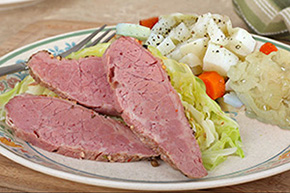
Corned Beef and Cabbage

Chicken Cacciatore
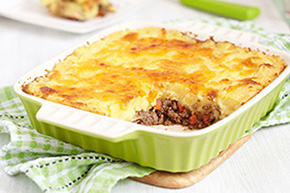
Shepherd's Pie

Roasted Vegetables
Coconut Sugar and the Ketogenic Diet
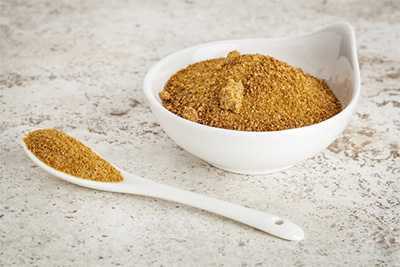
Our bodies
use glucose, fatty acids (fats), and ketones as their primarily sources
of fuel. We get glucose primarily from the carbohydrates in our foods.
When you eat a meal, these carbohydrates are converted into glucose and
released into the bloodstream. As a consequence, your blood sugar
(glucose) levels rise.
If you
don’t eat for a period of time or if you don’t eat carbohydrate-containing foods, your blood glucose levels become low. In order to
supply the energy your cells need, stored fat is released as fatty
acids. Some of these fatty acids are converted into alternative forms of
fuel known as ketones. The body uses fatty acids and ketones to produce
energy just as it does glucose. Ketones are of special interest because
they provide much more energy than glucose and are required by the brain
in the absence of glucose. Fatty acids cannot supply the brain with
energy, it must have either glucose or ketones. When you go on a
ketogenic diet, you severely restrict carbohydrate consumption, so blood
glucose levels remain perpetually low (but not hypoglycemic), compelling
the body to release fat and produce ketones. When this happens a person
is said to be in ketosis, sometimes also referred to as nutritional
ketosis because it is induced by the diet.
Carbohydrate consumption must be kept very low in order to stimulate
nutritional ketosis. If too many carbs are eaten, the liver stops
converting fatty acids into ketones and blood ketone levels fall. Blood
glucose and blood ketone levels rise and fall opposite to each other.
When blood ketone levels are high, blood glucose levels are low, and
vice versa.
Generally,
the average person can maintain mild nutritional ketosis if they limit
their carbohydrate intake to less than 40 or 50 grams daily. It varies
slightly from person to person. Reducing carbohydrate consumption
further, increases blood ketone levels. Ketogenic diets used
therapeutically to treat brain disorders such as epilepsy or Alzheimer’s
generally limit carbohydrate consumption to 10 to 25 grams daily. So the
less carbohydrate you consume, the higher your blood ketone levels
become.
Carbohydrates are found in various quantities in foods. Starch and sugar
are pure carbohydrate. Fiber is also a carbohydrate but the carbohydrate
molecules are bound in such a way that our bodies cannot break them
down; so they pass in and out of the body without providing any
significant amount of calories, nor do they contribute to the
carbohydrate load on the body. Some foods are rich in starch and sugar,
such as breads and grains (wheat, rice, oats, corn), potatoes, beans,
fruits, juices, and most processed convenience foods (chips, cakes,
donuts, candy, soda). Most vegetables are relatively low in carbs, being
composed primarily of water and fiber.
Foods high
in starch and sugar raise blood glucose levels faster and higher than
those rich in water, fiber, protein, or fat. High blood glucose levels
can have adverse effects on health as well as prevent nutritional
ketosis. A scale called the glycemic index (GI) is used to gauge how
quickly certain foods raise blood sugar levels.
Foods are
assigned a number between 0 and 100 on the glycemic index scale. The
number assigned to each food is determined by how quickly the carbs in
that food raises blood glucose. The smaller the number, the less impact
the food has on your blood sugar levels.
The
glycemic index values are determined experimentally by feeding human
test subjects a fixed portion of the foods (after an overnight fast),
and subsequently extracting and measuring samples of their blood at
specific intervals of time. Glucose, taken orally, is very rapidly
absorbed into the bloodstream and is assigned a glycemic index number of
100. All other foods are compared to pure glucose, with GI numbers
between 0 and 100. A food that does not raise blood sugar at all has a
GI of 0. Coconut oil has a GI of 0.
The
presence of fat, protein, fiber, and acid (such as citric acid, lemon
juice, and vinegar) in foods lower the glycemic index. Most foods are a
combination of carbohydrate, fat, protein, fiber, and acid, so you can’t
tell what the glycemic index is unless it has been tested. For example,
when sugar (sucrose) is combined with other food ingredients such as a
cream, nuts, and guar gum (a fiber used as a thickening agent), to make
ice cream, the GI will be lower than the sugar alone.
Coconut or
palm sugar is produced from the sap of the coconut palm. It is much like
the sap of a maple tree from which we get maple syrup and maple sugar.
When a coconut flower begins to bud, it is cut, causing it to drain sap.
The sap is collected and dehydrated. As the water is evaporated, it
forms sugar crystals rich in vitamins, minerals, and proteins. Glycemic
index testing carried out at the University of Sydney has determined
that the glycemic index of coconut sugar is 54, not the 35 you often see
quoted on the Internet. A GI of 54 is still relatively low in comparison
to other forms of sugar.
The higher
the GI, the greater the impact on blood sugar levels a food has, and
generally the more undesirable or incompatible it becomes to a ketogenic
diet. The GI is divided into 3 major levels:
55 or less
= low (good)
56-69 =
Medium
70 or
higher = High (bad)
Generally,
foods that have a low glycemic index are more keto-friendly.
In other words, they are less likely to prevent or interfere with
the production of ketones. There are many types of sweeteners and they
each affect GI slightly differently. Coconut sugar and maple sugar fit
into the “good” category of 55 or less. Below is the GI of some common
sweeteners.
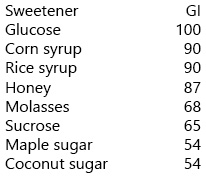
The rate at
which the liver produces ketones is influenced not only by dietary
carbohydrates and blood glucose levels, but also by the way certain food
components are digested and metabolized. Non-caloric sweeteners like
aspartame and stevia have virtually no effect on blood glucose levels
because they are normally used in such small quantities that they
contribute an insignificant amount of calories. However, they do affect
metabolism and hormone balance which can arrest ketone production,
independent of blood sugar levels. For example, just a few drops of
stevia in a single meal can kick a person out of ketosis. You can eat a
whole teaspoonful of coconut sugar and not get this big of an effect.
You can
incorporate a small amount of
coconut sugar into a healthy ketogenic diet and maintain good blood
ketone levels. Like with any other food, you need to keep track of the
total amount of carbohydrate you eat and make sure not exceed your daily
limit, which is generally somewhere between 20 and 40 grams per day. One
tablespoon (8 g) of coconut sugar contains 8 grams of carbohydrate, so
about 1 gram of coconut sugar delivers 1 gram of carbohydrate.
I do not
recommend eating coconut sugar often when on a ketogenic diet. But you
could use a little now and then. And you must keep track of the total
amount of grams of carbohydrate you consume so that you don’t overdo it.
The danger of using too much coconut sugar, like any other sweetener, is
that the sweet taste can become addictive. So it is best saved for
special occasions.
In
ketogenic diets for children, a cream drink is often added to meals to
boost the fat content of the meal. This drink is typically made using
heavy cream, MCT oil, artificial sweetener, and sometimes flavorings.
MCT oil is used instead of coconut oil because it will remain liquid
when combined with chilled cream. Some type of artificial sweetener,
such as aspartame or Splenda, is added to make the beverage more
palatable. The problem with this drink is that although the artificial
sweeteners supply no calories, they are anti-ketogenic and will reduce
the body’s ability to produce ketones. A little coconut or maple sugar
can be used instead, making it far more compatible with a ketogenic
diet.
Let’s look
at an example using the Keto Strawberry Drink recipe below. Assume you
are limiting your total carbohydrate intake to 30 grams per day. If you
divide that amount equally into three meals, that allows you 10 grams of
carbohydrate per meal. The Keto Strawberry Drink recipe makes 4
servings. Each serving contains 5.5 grams of carbohydrate, 37 grams of
fat, and 1.5 grams of protein.
If you
include this beverage with a meal, you will have to limit the rest of
the meal to no more than 4.5 grams of carbohydrate; that would be about
the equivalent amount of carbohydrate in 1 medium carrot or 1 medium
bell pepper. So you see, you cannot use too much coconut sugar or it
will quickly eat up your allotted carbohydrate for the day.
Keto Strawberry Drink
This recipe
produces a high-fat, mildly sweet drink that could be used in a
ketogenic diet. Only a small amount of coconut sugar (1/2 teaspoon per
serving) is used so as to keep it compatible with a ketogenic diet.
Store any
leftover drink in the freezer in individual serving sizes; small paper
cups work well for this. Slightly thawed and stirred, this beverage
transforms into a keto smoothie.
1 cup (120
ml) organic heavy cream
6 medium
organic strawberries (about 170 g)
1/4
teaspoon vanilla extract
2 teaspoons
coconut sugar
1/4 cup (60
ml) MCT oil
Keep the
cream and strawberries well chilled before making. Combine strawberries,
vanilla, coconut sugar, and MCT oil into a food processor and blend.
Stir in the cream and serve.
Makes four
1/2 cup servings. Each serving contains 37 grams fat, 5.5 grams
carbohydrate, and 1.5 grams of protein.
Eggs, Cholesterol and Cardiovascular Disease: The Real Science
Eggs are a whole food par excellence, a rich source of quality protein, vitamins, minerals, and right fats. Their amino acid protein "pattern" is best suited for our bodies.
Federal law mandates farm animal feed provide uniform vitamins, essential fatty acids, amino acids, minerals, etc. American chickens' feed is far more nutritious than most Americans' diets. The synergistic effect of such nutrient-rich eggs is of far greater value than isolated supplements, often made from petroleum.1
Unfortunately, Americans have been frightened
away from this superfood by misinformation tying dietary cholesterol to
elevated blood cholesterol and heart disease.
First, nearly 80% of
cholesterol in our bodies is produced by the liver. If the diet is low
in this, the liver works harder to produce more (or when the adrenals
are under stress).
Studies from University of California proved there is "no correlation between cholesterol in the diet and heart attack rates." The Boston University Framingham Heart Study followed 912 patients for many years, proving there were "no significant differences in the actual blood cholesterol levels" between those who ate as many as two dozen eggs per week and those who ate none!2 Then there is also the study done with the man who healthfully consumed 25 eggs daily as reported in the New England Journal of Medicine. http://blogs.plos.org/dnascience/2015/03/05/man-ate-25-eggs-day/
In the sixties the American Cancer Society did an eight year survey of 800,000 people and discovered those "who ate five or more eggs/week...had slightly fewer heart attacks and stroke deaths than those who ate less than five eggs/week and less of those other supposedly dangerous foods." In other words, eggs appeared to protect against heart attacks!3
So who started the "eggs are bad" fallacy? Interestingly, it all began with a study done by the breakfast Cereal Institute, using dried (oxidized) egg yolk powder. This damaged food renders fats perilous to blood vessels. Subsequent studies have failed to prove any cholesterol danger from eggs.
When the pharmaceuticals created an anticholesterol drug, they (and the processed food industry) "cunningly recruited the orthodox medical community and the public in the so-called 'war against cholesterol.' It worked."4 Forty years later their sales are soaring and many people still avoid eggs like the plague. Yet heart disease is as high as ever.
Not only does dietary cholesterol not translate to high blood cholesterol, but eggs contain eight times as much lecithin, an emulsifier that helps keep cholesterol liquid and to "prevent its deposition on arterial walls."5
Unprocessed (unoxidized) eggs are satisfying, far safer than carb loading. Seed-like, this germinative food contains all essentials for organism growth, Hattersly reminds us. Unless there is an allergy to them, eggs make a meaningful contribution to a restoration regimen. Dr. David G. Williams says they are "One of the healthiest foods on the planet!"
However, frying eggs (or anything) in damaged, refined oils is very unhealthy. Scrambling exposes eggs to oxygen, can produce the dangerous "oxysterols" of powdered eggs in processed foods. This may lead to atherosclerosis and cancer.6 Best is over-easy in a little cultured raw butter, coconut or olive oil at low heat. Soft boiling is also healthy.
Our family enjoys my crème brûlée that provides
a wonderful way to get a significant amount of complete protein in your
diet. As the main dish, it may be eaten for a meatless lunch or
dinner, or as dessert for a meatless dinner. However, your family
chooses, they will enjoy it!
References
-
Hattersley, JG, Eggs Are Great Food, Townsend Letters, Jan. 1996, pp 46-47
-
Gittleman, Your Body Knows Best, Pocket Books, NY, 1996, pp. 60, 61 Hattersly, op. cit.
-
Williams, DG, Alternatives, Mtn. Home Pub, Vol. 6, No 7. Jan. 1996 Hattersly, op cit. Ibid
Article reprinted
with permission from the author. Eatin’ After Eden,
http://eatinaftereden.com.
Do you have friends who would like this newsletter? If so, please feel free to share this newsletter with them.
If this newsletter was forwarded to you by a friend and you would like to subscribe, click here.
Copyright © 2017, Bruce Fife. All rights reserved.
